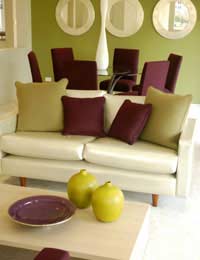Should You Let Property Furnished or Unfurnished?

The decision about whether to rent furnished, unfurnished or part furnished is likely to have a big impact on the type of person that you end up letting the property to.
There are no rules that say a landlord should furnish a property before offering it for rent and the decision is completely down to the landlord, and occasionally also the tenant, if the supplied furniture is not to their taste, or they already have some of their own. In most cases, fixtures and fittings are open to negotiation between the landlord and tenant and an agreement can be reached.
The Benefits of Letting Fully Furnished
If you let a property furnished, you’ll attract people who are in a hurry, or who may not be able to afford to buy all the furniture themselves, such as young people and students. It’s often easier to find a tenant, and at the end of the tenancy, the furniture stays too.Tax wise, you get to deduct a percentage of the cost of the furniture that you’ve provided in the property from your tax liability.
The Benefits of Letting your Property Unfurnished
You often find that tenants who move in and have to buy their own furniture tend to stay in the property for longer, because moving costs more if you have to transport furniture too. Many tenants feel more at home surrounded by their own furniture and your taste may not be the same as theirs. You also have the benefit that they are responsible for wear and tear on their own furniture, and you don’t have to worry about fire safety regulations if you don’t supply any furniture.Part Furnished Properties
There is another option, which is to be to let the property part furnished – and what you include in this definition is completely up to you. You can offer a choice of furniture, offer just the kitchen and white goods, or leave a sofa and table – it’s a totally flexible option and often makes it easier to find tenants.Insurance Considerations
There are no laws that force you to insure the property in a home you let out to tenants, but for your own peace of mine it’s best to do so. Some landlords have what are called inventory agents who visit the property before anyone moves in and compile a list of everything that’s there before the tenancy starts, and again at the end of the tenancy.You may have to shop around to find an insurer who will offer insurance for the contents in tenanted properties - and be warned, it’s not usually cheap. You must make sure that you let the insurance company know of any changes in occupancy too.
Safety Standards for Appliances
Before you let your property out, it’s advisable to carry out a Portable Appliance Test (PAT), to show that any electrical goods in the property are safe and in good working order. It’s not a legal requirement but is a good selling point for tenants.There are safety standards that apply to furniture though – all furniture must be the legal fire resistant standard, and must have a label on stating that it complies with the fire safety regulations.
Financial Considerations
If you let the property furnished, you can claim an allowance on the tax you pay on income you make from the rental, up to 10 per cent of the total rent minus charges and services such as council tax and water rates. This is called 'wear and tear allowance'. You could alternatively make a claim for the net cost of replacing a particular item of furniture, but not the original cost of the item. This is known as a 'renewals allowance'.You cannot claim these allowances if you let an unfurnished property. If your property is unoccupied, you can also apply for discounts on your council tax, the amount of which depends on whether the property is furnished or not.
If the property is both unoccupied, unfurnished properties, you could claim up to a 100 per cent Class C council tax discount, for up to six months.If the property is furnished, you can apply for an 'unoccupied discount' instead, the amount of which varies according to your local council. The discount can apply until the end of the tax year and then you could have to reapply for the following year.
Business Energy With a Difference
If you are looking for business energy or need advanced solutions like remote energy monitoring, new supplies, downgrading or upgrading capacity, have a no obligation chat with Purely Energy.
To find our more get in touch here. or call 0161 521 3400.








